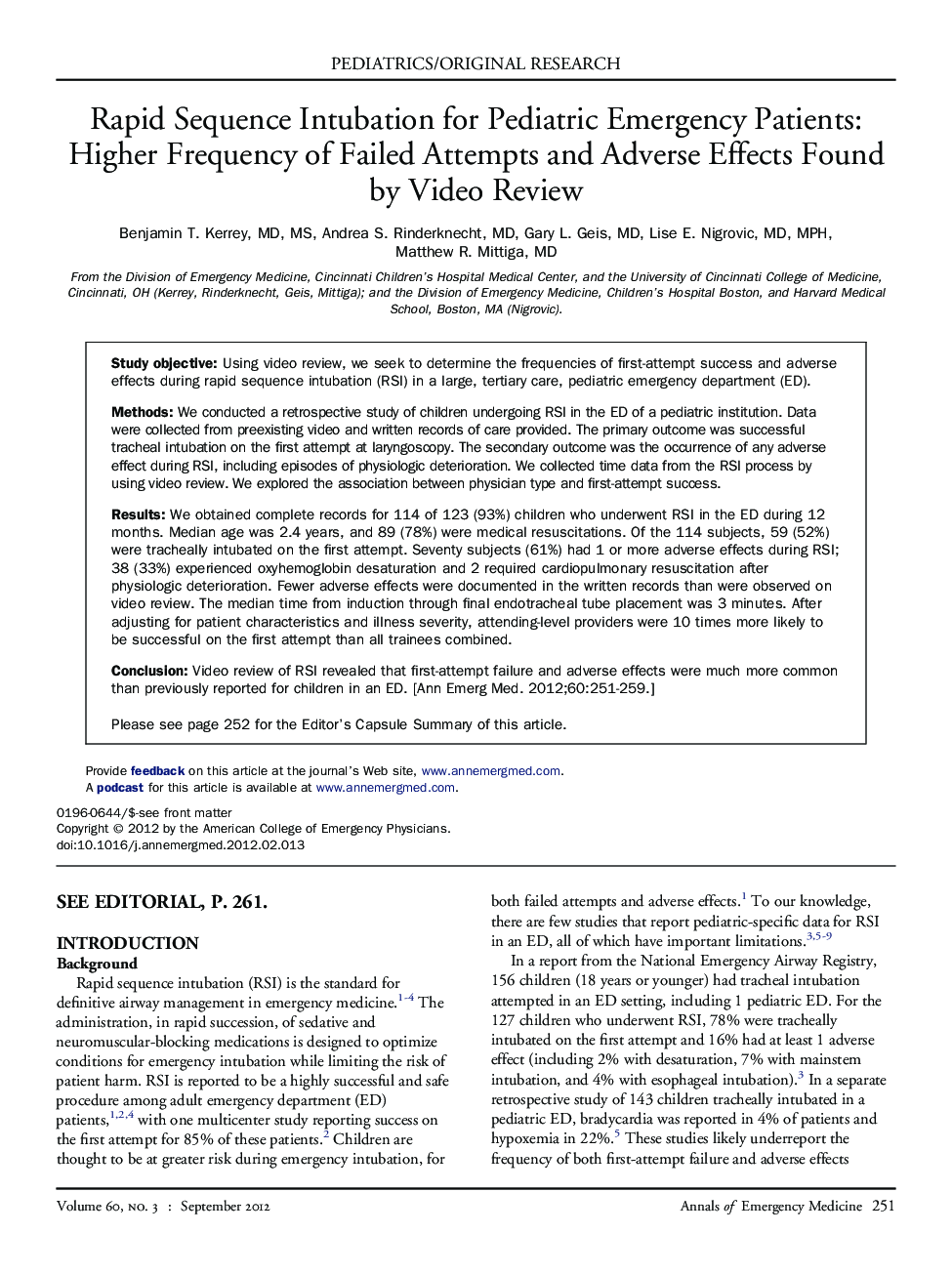| Article ID | Journal | Published Year | Pages | File Type |
|---|---|---|---|---|
| 3230408 | Annals of Emergency Medicine | 2012 | 9 Pages |
Study objectiveUsing video review, we seek to determine the frequencies of first-attempt success and adverse effects during rapid sequence intubation (RSI) in a large, tertiary care, pediatric emergency department (ED).MethodsWe conducted a retrospective study of children undergoing RSI in the ED of a pediatric institution. Data were collected from preexisting video and written records of care provided. The primary outcome was successful tracheal intubation on the first attempt at laryngoscopy. The secondary outcome was the occurrence of any adverse effect during RSI, including episodes of physiologic deterioration. We collected time data from the RSI process by using video review. We explored the association between physician type and first-attempt success.ResultsWe obtained complete records for 114 of 123 (93%) children who underwent RSI in the ED during 12 months. Median age was 2.4 years, and 89 (78%) were medical resuscitations. Of the 114 subjects, 59 (52%) were tracheally intubated on the first attempt. Seventy subjects (61%) had 1 or more adverse effects during RSI; 38 (33%) experienced oxyhemoglobin desaturation and 2 required cardiopulmonary resuscitation after physiologic deterioration. Fewer adverse effects were documented in the written records than were observed on video review. The median time from induction through final endotracheal tube placement was 3 minutes. After adjusting for patient characteristics and illness severity, attending-level providers were 10 times more likely to be successful on the first attempt than all trainees combined.ConclusionVideo review of RSI revealed that first-attempt failure and adverse effects were much more common than previously reported for children in an ED.
